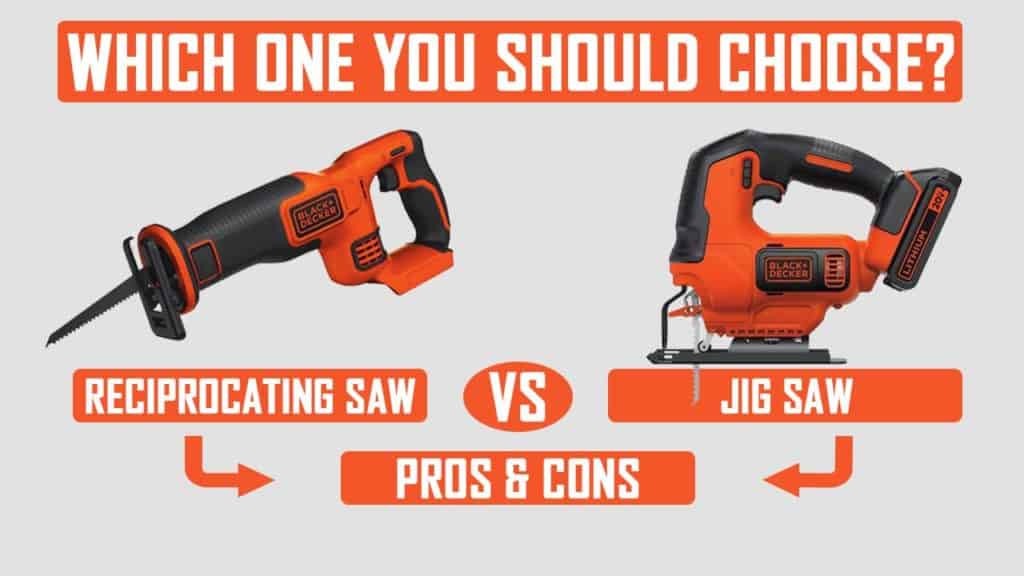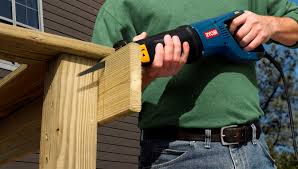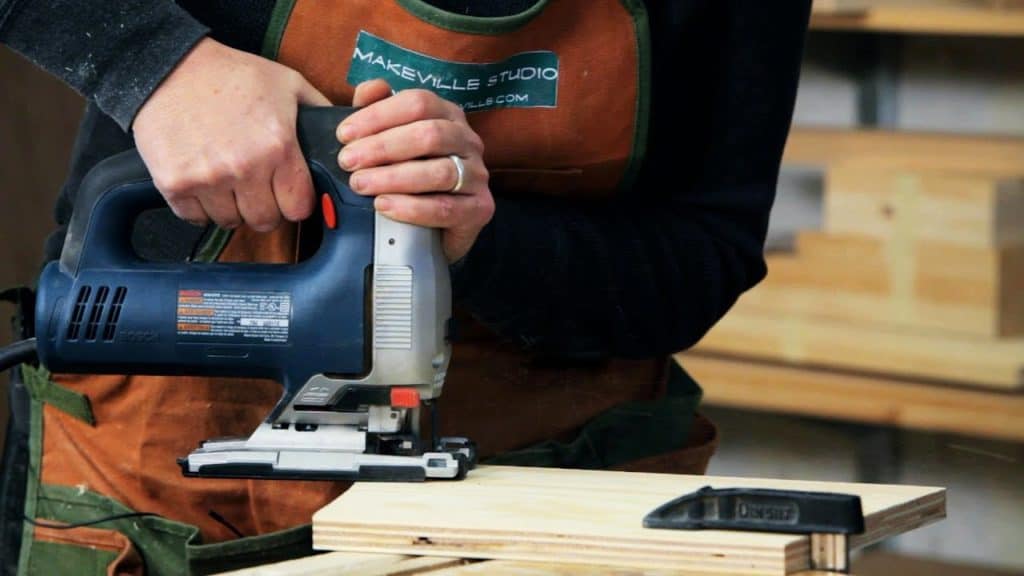Reciprocating Saw vs Jigsaw – Which is Better & Why?

Remodeling your house? Cutting large chunks of plywood? Have a demolition project coming up? Then you’re probably considering getting either a reciprocating saw or a jigsaw. These saws are very different but are typically used for similar projects, which makes it difficult to choose.
Both jigsaw tool and recip saw have the only one resemblance mainly that the blades are inserted in tight space and used in same way. Otherwise, there is no major resemblance between them. A reciprocating or you can saw Sawzall is much more powerful and larger than a Jigsaw tool. Both tools must be held by firm hands as you don’t need to rest your foot on the material for them to work.
The major revealing difference between both tools are a jigsaw produces fine and precise cuts while a reciprocating saw has crude cuts.
Reciprocating Saw

A reciprocating saw has many different names: Sabre saw, Sawzall, Recipro saw. No matter what you call it, this little saw is one of the most versatile tools out there. It can cut through nearly anything, including metal, wood, masonry, fiberglass, and ceramic tile.
This type of saw looks like someone took a chainsaw, shrunk down the blade, and put it on a power drill-type handle. The handle and the blade are parallel to each other, unlike other saws that have the blade sticking down at a 90-degree angle. The blade is hooked only on one end and moves back and forth quickly.
Jigsaw

A jigsaw is similar to a reciprocating saw, except the blade sticks out of the bottom at a 90-degree angle. Jigsaw blade is also narrower and smaller than reciprocating blades. They’re created for more intricate, detailed work and break more easily if pushed too hard. However, jigsaw blades also come in more varieties, allowing you to match the blade with whatever you’re cutting.
Jigsaws are typically used by leaning over the material you’re cutting. However, they can also be used out in front of you in some situations. Go to this page to find out more about Jigsaws.
Common uses of Reciprocating and Jigsaw
Pruning
Have you ever seen some cut a low-hanging branch with a jigsaw? No? Yeah, we haven’t either. While you probably could use a jigsaw to cut branches if you really wanted to, it would be awkward and probably not very safe. The jigsaw might also have difficulties thanks to its fragile blade. Instead, the reciprocating saws are better options for any sort of outdoor work, including firewood and felling small trees.
Sign-Making
If you’re looking to make a sign, a jigsaw is probably your best option. With a jigsaw, all you have to do is trace the design or letters onto your piece of wood and then guide the saw around the lines. Because the jigsaw is able to do more detailed work, it should have no trouble cutting out most signs.
While you can technically do this with a reciprocating saw too, the design just makes it awkward and messy. Reciprocating saws aren’t designed for detailed work and will have trouble cutting small designed very accurately. Plus, reciprocating saws are pretty bad at anything to do with curves.
Demolition
Just need to tear stuff down? Get a reciprocating saw. These saws have larger blades and more power, allowing them to cut through larger and harder materials. A reciprocating saw will have no problem cutting through drywall and cabinets. If a jigsaw is all you have, it can do demolition as well. However, it will do so at a much slower pace and you’ll probably break a blade or two.
Remodeling
When it comes to remodeling, it really depends on what you’re going to be doing. A reciprocating saw is better at tougher jobs, but a jigsaw will be able to outperform on any job that requires curved, intricate cuts. Both tools can handle PVC pipes and plywood.
A jigsaw will just cut them slowly and evenly, while a reciprocating saw will chew through them and make a mess. It just depends on what style you need for your specific job. Our suggestion? Get both. For jobs that require more brute force, use the reciprocating saw. If you’re trying to cut something very accurately, use a jigsaw.
Portability
Both power tools come with corded and cordless options. Obviously, if portability is on your must-have list, a cordless option of either tool is likely to fulfill your needs. Both are also lightweight and small, so you should have no issue transporting them around.
Safety
Jigsaws are safer than reciprocating saws – hands down. Because of their design, reciprocating saws are more difficult to control, not to mention their higher power and larger blades. Jigsaws are significantly more toned down when compared to a reciprocating saw. They have smaller blades, cut slower, and are easier to control.
A teen can easily learn a jigsaw, but a reciprocating saw is best left to those experienced with power saws. If you’re not used to saws, get a jigsaw. Ready to step up your sawing game a notch? A reciprocating saw might be a good option.
Is A Reciprocating Saw The Same As A Sawzall?
Yes, Sawzall is nothing just another name of this revolutionary tool (electric version) made by the company Milwaukee Tools. This is a registered trademark, invented in 1951. A portable electric hacksaw was the company’s first entry in the power tool market.
Sawzall® word has become a kind of synonym for the reciprocating saw whether made by Milwaukee or others like Ryobi, Dewalt, or Bosch. Even Nowadays Milwaukee’s Sawzall® is still popular, searched by same word by people, and still considered superior compared to other reciprocating saws on the market.
Which is better – Reciprocating saw vs Jigsaw?
A reciprocating saw is a go-to option for destruction, demolition, and mayhem. (Okay, maybe not mayhem as long as you use it correctly!) This type of saw is powerful, but not very precise. It can cut through nearly any material, just don’t expect it to be pretty when you’re done.
On the other hand, a jigsaw is the better option if you’re looking to create precise cuts. It is accurate, though it cuts slower than a reciprocating saw. It also isn’t as powerful, but it really doesn’t need to be for what it’s designed to do.
In the end, it comes down to whether you’re looking to destroy or create. Destruction? Get a reciprocating saw. Creating works of art? Get a jigsaw.
We have also written a detailed guide on difference between Jigsaw and circular Saw. Do read.
About the Author David Vieria
David has been a woodworker for most of his life — in his dad’s cabinet shop. After using the tools himself, he decided to share it his woodworking and power tools knowledge with DIYers. Read more about him
